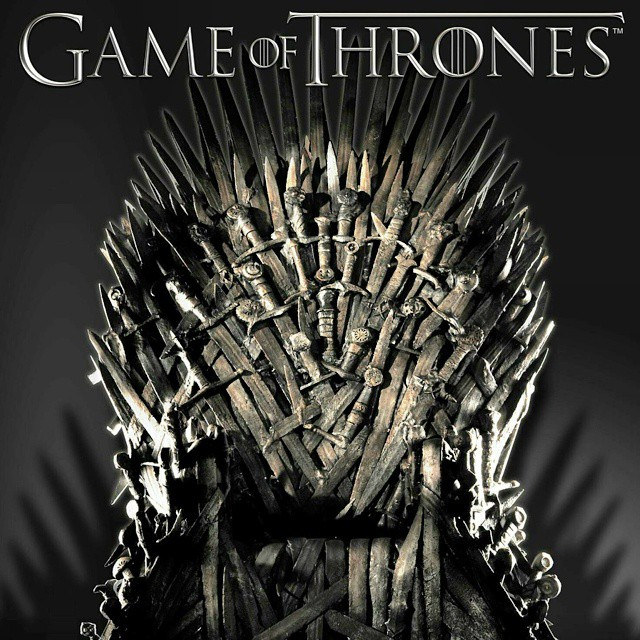You wouldn’t want to marry your aunt, uncle, cousin, or even your own sibling, and incestuous relationships are generally frowned upon by most civilizations, if not all. Some countries have laws that specify how distant cousins have to be in order to marry, while in Iceland, the population is so small that everyone is distantly related and they need to check an online database to make sure the person they’re dating is not their cousin (or at least, a second or third cousin).
Inbreeding – the practice of marrying and producing children with someone closely related to you by blood – is frowned upon today for its unsettling practices and biological effects, but in the past, it’s been widely practiced by ancient civilizations and noble families in Europe. It was common for nobles to marry other people, but when the practice was to marry fellow nobles and shun marriages to those without a drop of noble blood, eventually you’ll have limited options in the marriage market and you have to marry someone who’s distantly or closely related to you.
The House of Hapsburg, for example, was one of the most powerful houses in Europe for almost 500 years. They became a huge presence in European royalty because they kept marrying into different kingdoms, but eventually they had to start marrying cousins and uncles and nieces until their biological gene pool became so messed up that they eventually died out.
Inbreeding played a huge role in European history that it’s also seen in the successful book and TV series, Game of Thrones. So, in this article, I’ll explain how inbreeding in real life could destroy a huge dynasty of royals with access to the best medical care at the time and why it’s so dangerous, royal families have stopped practicing it.
Genetics: Inheriting Genes from Your Parents
 Let’s have a basic recap on biology. When humans and other animals reproduce, the offspring receives genes from both parents; half of your genes come from each parent. Your genetic makeup develops how you look like, which is why you might look like your mom or have your dad’s hair color. However, it also determines things you cannot see such as the risk for diseases. Diabetes, for example, is a genetic disorder, and if your grandmother has it, it’s possible for your parent to give you the gene that will increase the risk of developing diabetes yourself.
Let’s have a basic recap on biology. When humans and other animals reproduce, the offspring receives genes from both parents; half of your genes come from each parent. Your genetic makeup develops how you look like, which is why you might look like your mom or have your dad’s hair color. However, it also determines things you cannot see such as the risk for diseases. Diabetes, for example, is a genetic disorder, and if your grandmother has it, it’s possible for your parent to give you the gene that will increase the risk of developing diabetes yourself.
But if your mother has brown hair and your dad has black hair, how did you end up with black hair? That’s because of two forms of genes: dominant and recessive. Dominant genes are the more prevalent gene, while recessive genes are rarer genes that show up in real life. If black hair is the dominant gene and brown is the recessive and they are both present in your body, the dominant gene masks the recessive gene and you end up with black hair.
In Game of Thrones, dominant and recessive genes are actually the reason why Jon Arryn found out about Joffrey, Myrcella, and Tommen Baratheon’s true parentage. Black hair has always been a dominant trait in the Baratheons – even all of Robert Baratheon’s illegitimate children have black hair –so it should have masked all of his three legitimate children’s blonde gene from their mother. And because “the seed is strong,” it seems unlikely that all three of them ended up with recessive blonde genes, which is how Jon eventually discovered that those three were not Robert’s children.
Inheriting (Dangerous) Recessive Genes
 Have you ever heard of the term “genetic lottery”? It’s because genes, left unengineered or controlled by geneticists, form random combinations that make up your body. Born lucky, you get all the best physical and health genes from both parents and grow up attractive and healthy; get unlucky, and you could be born with a big nose matched with a small mouth, and rare diseases that will leave you disabled for life.
Have you ever heard of the term “genetic lottery”? It’s because genes, left unengineered or controlled by geneticists, form random combinations that make up your body. Born lucky, you get all the best physical and health genes from both parents and grow up attractive and healthy; get unlucky, and you could be born with a big nose matched with a small mouth, and rare diseases that will leave you disabled for life.
It’s a gamble, so think about a pack of cards. There are 52 cards, and each time you shuffle, there’s a likely chance you’re bound to get a good hand. If the dealer doesn’t shuffle, you’re bound to keep playing and getting the same combination over and over. Shuffling the deck is like producing a child with someone unrelated; not shuffling to recycle the combination is what happens when you reproduce with a close relative.
Remember how I said dominant genes mask recessive genes? This is important, especially when it comes to diseases and underdeveloped body parts. There are millions of genetic mutations that could cause diseases or make it difficult for you to function, and chances are, there are a lot of these genes in you right now. Some of them are unimportant and you’ll never really notice them, but some of these genes are also affecting factors such as your ability to produce blood. But you’re not facing that difficulty because it’s a recessive gene, and the dominant gene is masking it and making up for that gene so you can function normally.
So, if your mother gives you the recessive gene that could give you cystic fibrosis, a disease caused by poor genetics, your father’s dominant genes can mask it and prevent you from experiencing it. And because his genes are not similar to hers, his genes are shuffling the deck to give you good odds. However, if your parents are closely related, the gene pool gets smaller because they share similar genes. This would put you at risk of recessive genes creating disorders because there may not be a dominant gene to keep you protected.
Game of Thrones and Inbreeding

If you’ve read the novels and the additional content George R.R. Martin made for A Song of Ice and Fire, you’d know that the Targaryen dynasty ruled Westeros for hundreds of years – almost similar to the Hapsburgs, but with dragons. They practiced inbreeding many times in their family tree, and while we’re not sure about pre-Westeros Targaryens, we know for a fact that the dynasty started with Aegon the Conqueror and his sisters-slash-wives.
With centuries of inbreeding, it’s bound to cause some genetic mutations since the gene pool gets smaller and smaller. MatPat from the YouTube channel Film Theory explains it best: based on the coefficient of inbreeding (the percentage of how much identical genes they have because it came from the same ancestor), protagonist Daenerys Targaryen, whose grandparents were siblings who produced children that also married each other, has a 75 percent inbreeding coefficient.
In comparison, Joffrey (whose parents are siblings) only has a 25 percent inbreeding coefficient. That means 25 percent of his DNA is shared with his grandfather, and he has a 1 in 4 chance of developing a genetic disorder since 25 percent of that DNA cannot be protected with a gene outside of his parents’ gene pool.
Implication
Since, as inbreeding continues, more and more diseases cannot be masked by healthy genes, as each generation passes, the results get worse and worse. In Game of Thrones, this could explain why Targaryens were known for going insane, and it could also explain why Daenerys miscarried Rhaego: not because of magic, but because her genes were so damaged that she couldn’t continue the Targaryen line anymore. And it’s something we’ve seen in real life when Charles II of Spain ended the Hapsburg dynasty because he was sterile.
And sterility about inbred generations is a visible factor, one called “inbreeding depression.” Eventually, the genes get weaker and fragile that the next generation just dies earlier or are less likely to even be born. King Tutankhamun, for example, was the result of brother and sister producing a child, and he died at the age of 18. He also ended up marrying his half-sister, Ankhesenamun, and their only two children were stillborn.
Those that practiced inbreeding eventually saw how noble families that chose to marry close family members eventually led to the end of their line, which is why they stopped and it was eventually considered taboo to marry close relatives. Ironically, those who tried to preserve their family by keeping the bloodline within the family were the earliest to die out, but many families that allowed outbreeding remain to this day.
Because of the biological risks of inbred children, inbreeding is banned and frowned upon by most societies. While Game of Thrones shows a lot of graphic violence and uses magic, at least George R.R. Martin got his genetics right in his books, and made it an effective way to teach people about genes and the dangers of centuries of inbreeding.

